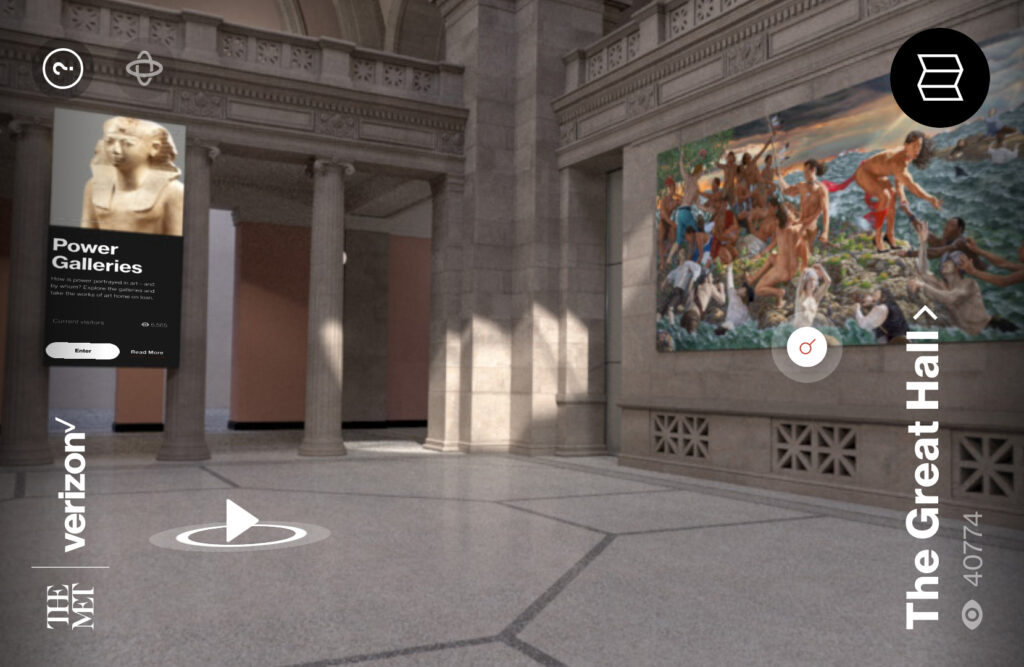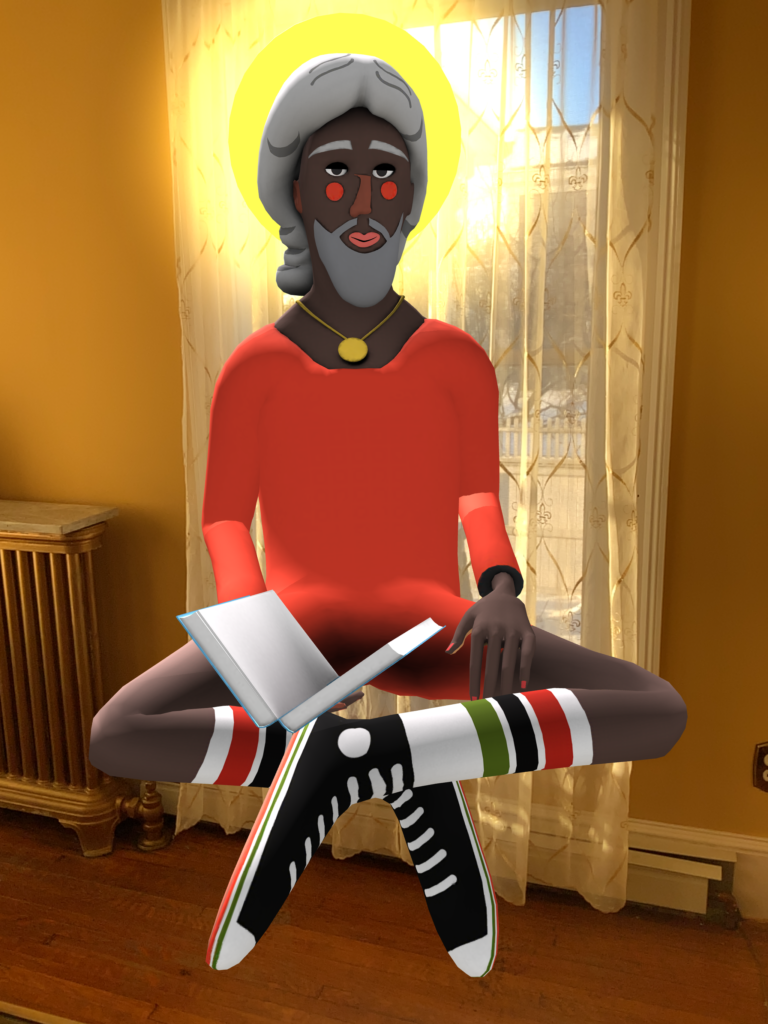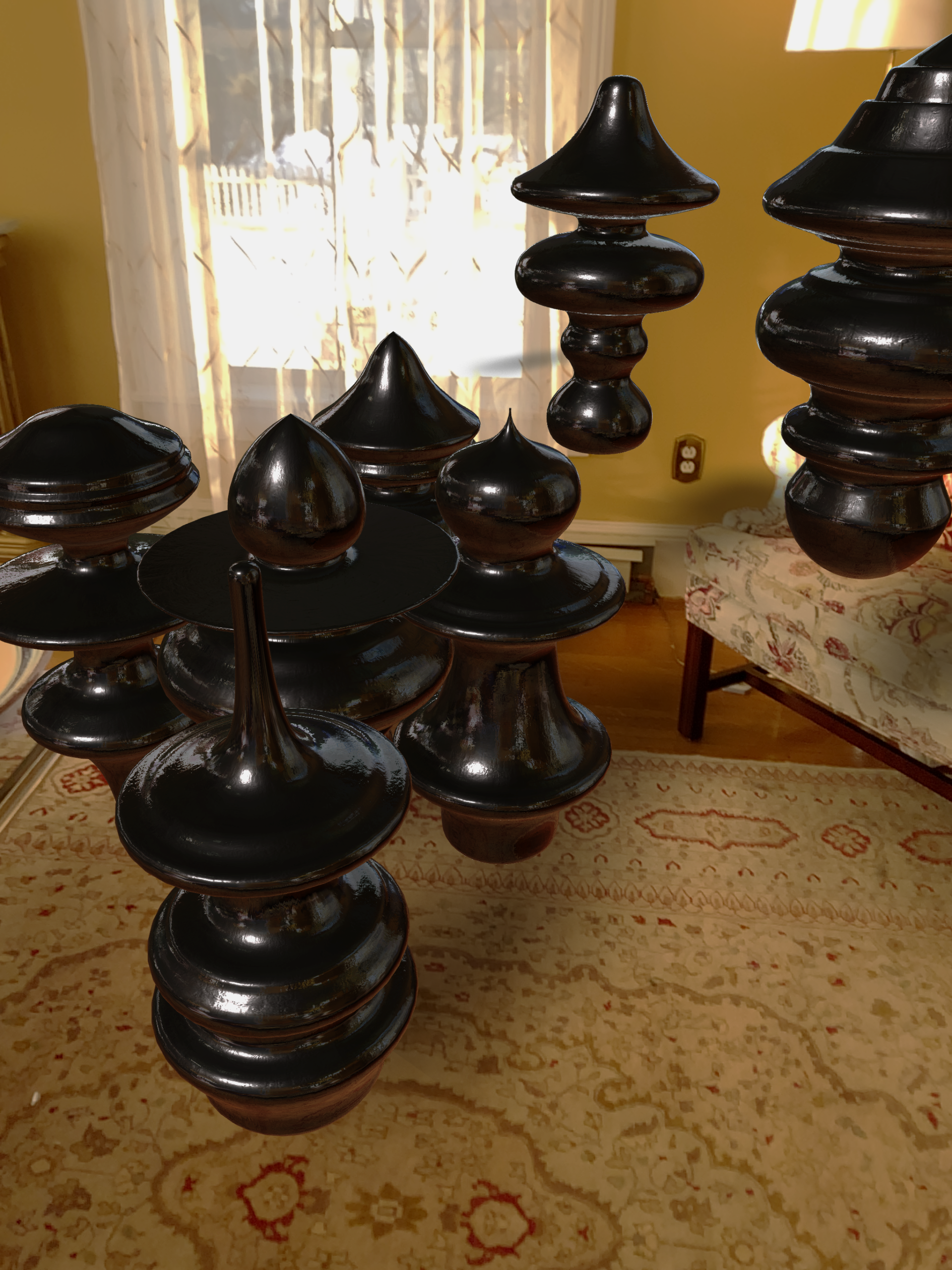Two time-limited exhibitions are upending the usual location-specific viewing conditions of AR art, allowing viewers to experience artworks from their homes. Most augmented reality artwork, like traditional physical art pieces, are site-specific — anchored to specific locations in the real world. Now, the Met Unframed eliminates the need to travel to a museum by making physical artworks accessible using XR tools, while Acute Art’s Unreal City at Home, removes the location restriction from an AR exhibition. Though these experiences have substituted one limitation (time) for another (place), until mid-February, both exhibits allow viewers to experience artworks using their phone or tablet, for free.

The Met’s experience presents visitors with a virtual tour, starting in a virtual representation of the museum’s Great Hall, and extending out into different themed galleries. In each space, you can look at specific pieces, nearly 50 in total, and engage in mini-games or quizzes about the artworks. Successful completion of these games allows you to ‘borrow’ an AR version of the artwork for 15 minutes. Then, you can place the art in your own environment.
Unreal City was initially envisioned as a walking tour of site-specific work, with 36 augmented reality artworks along the South Bank of the Thames in London, between the National Theatre at Waterloo Bridge and Millennium Bridge.
With Coronavirus surging in Britain, Acute Art made the artworks available from home — works from over a dozen artists are viewable for free by anyone with the Acute Art app until February 12.
Removing Geographical Boundaries of AR Artwork
Both The Met Unframed and Unreal City at Home are interesting exhibits in themselves, as well as useful demonstrations of how to deliver art experiences to audiences using XR technologies. The exhibitions can help XR creators think about opportunities for AR art delivery as well as broader influences in the world of augmented reality art.
The availability of these works ties into a larger trend towards location agnosticism in AR exhibitions. In a Jan 11 Art in America article, author Samantha Culp traces the history of AR art, beginning with primarily location-based AR, and the shift towards wider accessibility.
As Culp discusses, part of the power of site-specific works is that they reveal a place’s psychogeography — the emotions and memories that a landscape contains. Most early AR artists used site-specificity to comment upon political, environmental, or cultural aspects of the locations they selected. For instance, AR art was surreptitiously presented at MoMA, and again at the 2011 Venice Biennale.
Nancy Baker Cahill is a prominent XR artist, who continues to create location-specific AR works. Her 2020 work Liberty Bell presents a swirling, clanging bell hovering over the National Mall in Washington DC. Most people cannot go to Washington to see this artwork, and will only encounter this work — if they encounter it at all — in video form.
What is Gained and Lost When AR is Dislocated?
A further dislocation of AR experiences is posed by these apps from the Met and Acute Art, however. These experiences not only remove the artwork from it’s original context, but also place it in a new one, seemingly embodied and interacting with a new physical space. What is the difference between relating to an AR artwork in one’s house versus in a more controlled, designed environment?
A few thoughts —
- The most obvious reaction might be that the dislocation undermines the intention behind the artwork. Having an exhibition in a specific location frames off that space as one for a specific experience and contemplation, set aside from the busy day-to-day of messy living rooms and home offices. The kinds of performative contemplation of artworks that a gallery visitor might undertake in viewing artwork in their physical space seems silly when you’re in your bedroom, wearing fuzzy slippers. Of course, most of the art at the Met was not originally envisioned for a museum space, so it’s similarly arguable that the museum context undermines the artists’ original purpose, religious or otherwise. Yet if we consider the performance of art consumption as part of a process of art appreciation in modern art audiences, the lack of differentiation from everyday life might hollow out the experience.

- Bringing art into a domestic context allows viewers to co-create by selecting the placement of the artwork and designing unique interactions with space, which can allow them to design personal meanings beyond the more universal meanings assigned to locations by artists. Thus, the location freedom introduces a democratic element to the creation of the work, and can bring additional layers of meaning to the pieces.

- The artworks may elevate mundane spaces by creating psychogeographic connections in viewers’ minds, where there previously were none. For instance, if I use Acute Art’s app to place an AR version of the Aurora Borealis extending from my lamp, I am reminded of the Aurora experience whenever I look at the lamp or enter the room, whether or not the app is open. So the viewing of the AR artwork produces a ghost image that remains associated with the environment, adding hidden layers of meaning to the object, even when the AR experience fades. The lamp is no longer a lamp, it contains additional facets of meaning via the art it previously interacted with.
Trends for the Future
Although these AR art experiences appear in their current form due to the pandemic, augmented reality art generally is moving towards location agnostic experiences in the future. After all, the most common XR experiences right now are Snap and Instagram filters, many of them made by creators that don’t identify with the title ‘artist’. Yet these creations can augment any user’s face or environment, their canvas crosses the globe. Along the same lines, Adobe’s Aero creation platform will allow creators to build AR experiences that are not tied to specific platforms. Sharing an Aero experience allows a viewer to interact with an AR scene or narrative, irrespective of their geography.
AR creators and artists of the future may default to the assumption that their pieces will be consumed globally, but removed from a specific geographic context. Yet it is worth considering the role that location based work may continue to play in the future. There are potential problems with allowing full freedom of placement for all pieces — imagine, for instance, if Baker Cahill’s Liberty Bell were appropriated by the insurrectionists rioting at the US Capitol, and used to in a way that goes against the artist’s intention. Ultimately, choices about site specificity may come down to the role that the artist or creator wants to play, and how much the artwork needs to retain its original context to maintain its integrity as a piece.

